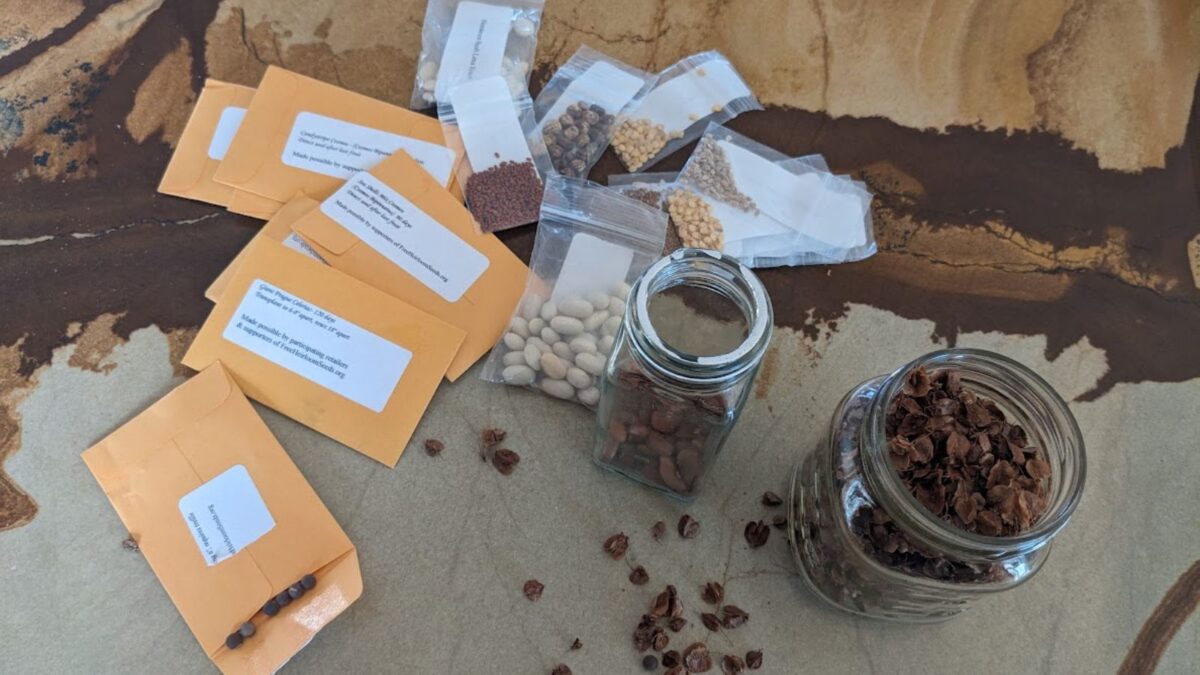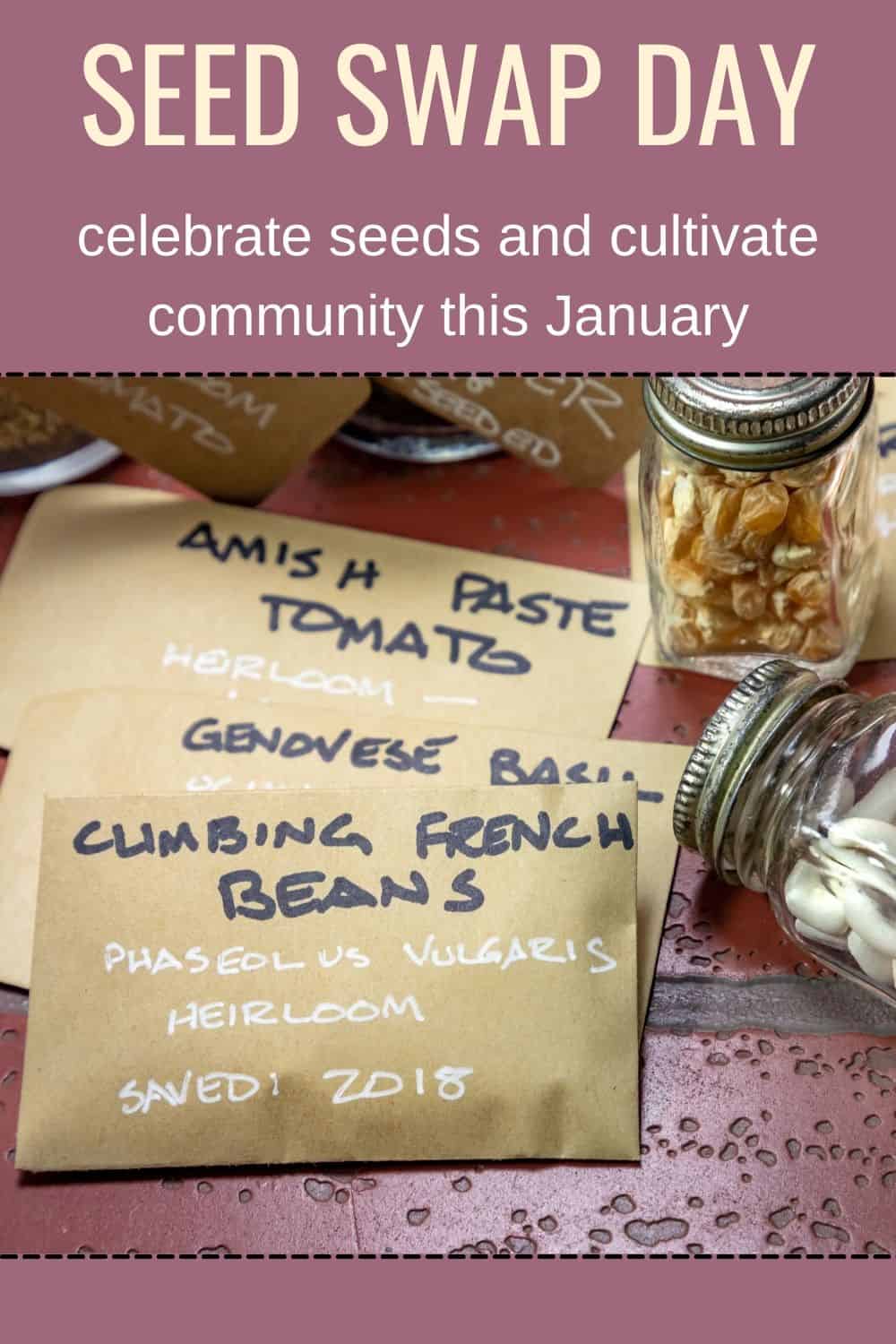While many people think of gardening as a warm-weather activity, gardeners know better. The growing season may begin in spring, but gardening truly starts in the winter. My first seed catalog this winter arrived in December, like an early Christmas gift, and the rest followed in January. What could be better than cozying up on a snowy day with a mug of hot tea to peruse seed catalogs and plan the summer garden? I’m not sure, but a community celebration of seeds comes close! Seed swaps bring gardeners of all levels together to share seeds, and Seed Swap Day is the perfect time to attend one.

What Is Seed Swap Day?
Celebrated on or around the last Saturday of January, Seed Swap Day is a day for gardeners of all levels to come together within their communities and share seeds with each other. While seed swaps occur at all times of the year, January is a great time to have one, while we’re still planning our gardens and before we begin starting seeds indoors.
And when so many communities have a seed swap on the same day, we feel a unique sense of connection with our fellow gardeners throughout the country and even around the world.
The people behind Seed Swap Day consider any seed swap that occurs within two weeks of Seed Swap Day to be a part of the greater celebration. It’s even going global: in a comment on a 2020 blog post, founder Kathy Jentz noted that the Seed Swap Day website has dropped National from the holiday’s title and welcomes seed swaps from across North America to be a part of the listing it publishes each year.
Check out these other garden holidays.
What is a seed swap?
A seed swap is a gathering where people come together to share seeds – often vegetables, but also herbs, fruits, and ornamentals. These can include homegrown seeds, leftover purchased seeds or seeds donated by a company.
Wherever they come from, the seeds must be viable and clearly labeled; no one wants to take home mystery seeds or seeds that won’t grow! The seeds are laid out on tables, often organized by type, for participants to browse through. Typically, there is a limit on how many seed packets a participant may take, often with a “bring one, take one” rule.
Many seed swaps also welcome the sharing of houseplants, cuttings, and seedlings as well as gently used gardening books and hand tools. Some truly become a celebration, offering things like music, refreshments, information tables, and demonstrations.
Seed swaps are nothing new, and they have many benefits. People have been coming together for thousands of years to share seeds, stories, and knowledge. This exchange cultivates community and improves the diversity and resiliency of the local food supply.
Old and unique heirloom varieties, as well as the stories behind them, are kept alive this way. Plus, seed swaps allow you to exchange leftover seed that would otherwise go to waste for something you’ll actually use, and they’re great places to discover exciting new-to-you varieties!
When did Seed Swap Day start?
Kathy Jentz organized the first annual Washington Gardener Magazine Seed Exchange in Washington, DC, on January 26, 2006. Soon after, Kathy, the editor of the magazine, had National Seed Swap Day named an official holiday. After the success of that first event, seed swaps throughout the country have joined in the celebration each year.
How can I celebrate Seed Swap Day?

The best way to celebrate Seed Swap Day is, of course, to attend a seed swap! The Seed Swap Day website posts a listing of events every January, or you can reference a local community calendar or your local Master Gardeners group or cooperative extension office.
Social media is also a great place to look; search within local gardening groups and plant-swap pages.
If you can’t find a seed swap in your area, consider hosting one! This can be as simple as asking a few gardening friends if they would like to meet up to share seeds or as complex as planning a full-on event.
How do I host a seed swap?
At a minimum, a seed swap requires a date and time, a location, and tables. Seed Swap Day narrows down the date for you (the last Saturday of January, or any day within two weeks of that date), and a local park will likely have a pavilion with picnic tables, checking off the other two requirements. Signs can also be helpful, both large ones to advertise the event and small ones to help organize the seeds (and other items) by type.
For a small, informal event, you might just rely on word-of-mouth advertising among friends and neighbors. Your workplace, religious community, and social media pages are also great places to find participants. Put up flyers around town or post about your seed swap on social media, making sure to include the hashtag #SeedSwapDay. If you send details of your event to the Seed Swap Day website, they’ll post it there, too!
Remember to set guidelines to ensure that everyone enjoys the event. When sharing about the seed swap, note that attendees should bring clearly labeled, viable seeds – you may even spell out what details should be included on labels.
You’ll also want to specify how much each participant can take home. For example, you might have a strictly “bring one, take one” policy, or perhaps those with nothing to share, such as first-time gardeners, can take up to five seed packets. The latter works especially well if you get extra seed donated from a company.
If you want to read more about hosting a seed swap, Seed Savers Exchange has created a very helpful, detailed guide on “How to Organize a Seed Swap.”
Like me, are you happily dog-earing pages of seed catalogs and dreaming up this year’s garden during these cold days of January? If you would like to share your enthusiasm with equally enthusiastic fellow gardeners, consider celebrating Seed Swap Day by attending a local seed swap at the end of January!



